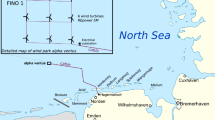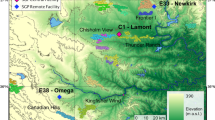Abstract
SHOCK waves in calm air travel with a velocity that is easily calculated to include the effects of temperature, humidity and the strength of the shock front1. In turbulent air, however, the instantaneous velocity of a shock wave is modified by local wind conditions. The shock pressure wave produces a change in the refractive index of the air2 which causes partial reflexion of electromagnetic waves, so it has been thought possible to track the shock wave using a Doppler radar, thereby enabling its velocity to be measured and the radial wind component to be ascertained. For this purpose Alien and Weiner3 have presented a theory to calculate the reflexion coefficient of electromagnetic waves from a sound shock front. Support for this theory has now been obtained using the Riccati form of the wave equation as suggested by Millington4. This indicates that a typical value for the power reflexion coefficient, for realizable shock waves at a range of a few hundred feet, is about −140 dB, assuming that the shock front is short compared with the radar wavelength.
This is a preview of subscription content, access via your institution
Access options
Subscribe to this journal
Receive 51 print issues and online access
$199.00 per year
only $3.90 per issue
Buy this article
- Purchase on Springer Link
- Instant access to full article PDF
Prices may be subject to local taxes which are calculated during checkout
Similar content being viewed by others
References
Stephens, R. W. B., and Bate, A. E., Acoustical and Vibrational Physics (Arnold, London, 1966).
Tonning, A., Appl. Sci. Res., B, 6, 401 (1956–57).
Allen, C. H., Proc. World Cong. Radio Meteorol., 270, Boulder, Colorado, September 1964.
Millington, G., Electronics Lett., 1, 184 (1965).
Author information
Authors and Affiliations
Rights and permissions
About this article
Cite this article
BLOGH, J., COOPER, D. Method for Measuring Wind Turbulence. Nature 220, 1118–1119 (1968). https://doi.org/10.1038/2201118a0
Received:
Issue Date:
DOI: https://doi.org/10.1038/2201118a0
Comments
By submitting a comment you agree to abide by our Terms and Community Guidelines. If you find something abusive or that does not comply with our terms or guidelines please flag it as inappropriate.



